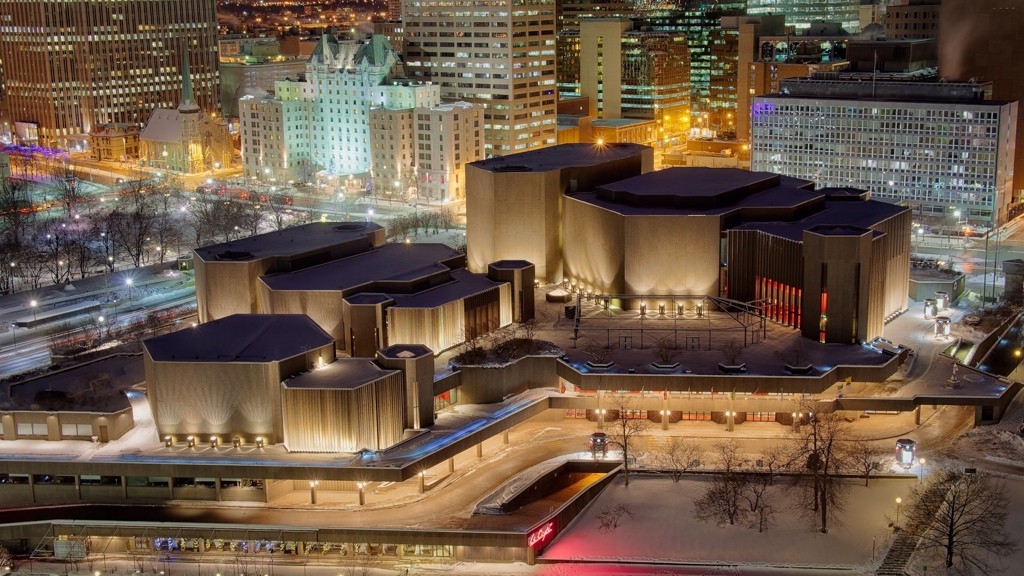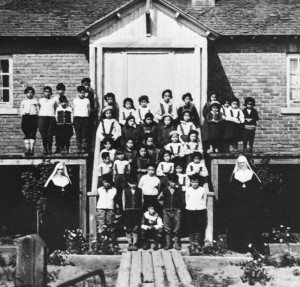Art and reconciliation in Ottawa
Canada’s Truth and Reconciliation Commission (TRC) has been examining the tragic legacy of racism, sexual, and physical abuse, and assimilationist intent within the former Indian Residential School system, and issued its final report in December 2015. While Prime Minister Justin Trudeau’s government has promised to implement all 94 recommendations, pledging to right a historic wrong, the cultural community is doing its part, too.

The National Arts Centre in Ottawa, seen from across the Rideau Canal. Photo: Joel Bedford, Creative Commons, some rights reserved
Throughout January and February, the National Arts Centre (NAC) in Ottawa is featuring performances, exhibits, and discussions under the banner of Art and Reconciliation, as a way of recognizing the work of the commission and the renewed focus on indigenous people by the federal government.
A shameful backstory
Indian Residential Schools existed in Canada from the 1840s to 1996. One hundred and fifty-thousand children were removed from their homes and communities and educated in federally regulated schools operated by the Roman Catholic, Anglican (Episcopal), United (a 1925 merger of most Methodist, Presbyterian, and Congregationalists), and Baptist churches.

Children and nuns in front of the Indian Residential School, Maliotenam, Quebec, circa 1950. Photo: Library and Archives Canada
The mandate of the schools was not just to educate children, but to extinguish traditional language and culture by assimilating indigenous youth into white, Christian society. Efforts at assimilation were all too often made using very un-Christian, abusive means. At the peak of the program, there were 80 residential schools across Canada.
In southern Ontario, there were four schools, including one on the Alderville Reserve near Peterborough. Their counterpart schools in the United States were the American Indian boarding schools, also a federally-regulated, assimilationist effort that was operated by various church organizations and has had a similarly controversial legacy. The only Indian boarding school in New York was the Thomas Indian School on the Cattaraugus Reservation in Erie County.
In Canada, the federal government reached a compensation agreement with residential school survivors in 2006. In 2008, former Prime Minister Stephen Harper announced a formal apology to survivors and victims in Parliament.

This multi-disciplinary production based on the Indian Residential School experience has it’s world premier on January 14 at the National Arts Centre in Ottawa. Photo: James Morgan
Art and Reconciliation Events
- On January 9 at 9 pm, the NAC Presents series will include A Tribe Called Red, a contemporary act that does a modern take on pow wow music.
- The Rita Joe Song Project will be launched on January 13 at 5:30 pm on the NAC Fourth Stage and will include indigenous youth from across Canada performing and recording songs inspired by the poems of Mi’kmaq elder and residential school survivor Rita Joe.
- The song project is a prelude to what could be called the signature event of Art and Reconciliation. It is the world premiere showing on January 14 at 8 pm of I Lost My Talk, a multidisciplinary production based on the poem of the same name by Rita Joe, based on her own experience in a residential school.
The production combines a film directed by Barbara Willis-Sweete and an original score composed by John Estacio and performed by the NAC Orchestra, which is conducted by Alexander Shelley. I Lost My Talk was commissioned by the family of former Prime Minister (1979) and cabinet minister (1984-1988) Joe Clark to honour his 75th birthday. - To complement the premiere event on January 14, there will be a panel discussion at 6:30 pm on the context of the reconciliation process which will begin with remarks from Clark.
- January 14 at 2 pm is also the opening of the exhibition 100 Years of Loss in the NAC lobby which raises awareness about the residential school system and its effects on generations of indigenous Canadians.

Going Home Star, a new production of the Royal Winnipeg Ballet, is one of the productions the NAC is featuring as part of its Art and Reconciliation initiative. Photo: James Morgan
Three more events round out the Art and Reconciliation program.
- From January 28-30, each evening at 8 pm, it’s Going Home Star—Truth and Reconciliation, a newly commissioned production by the Royal Winnipeg Ballet will be staged at the NAC. It is based on a story written by noted Canadian writer Joseph Boyden.
- Innu author, composer, and singer Florent Vollant will perform on January 30 at 7:30 pm.
- The final Art and Reconciliation feature, a revival of Moonlodge, a longtime classic of Canadian indigenous theatre, will take place Friday, February 12 and Saturday, February 13 at 7:30 pm
Art and Reconciliation is not the sort of event that only resonates with indigenous people. Anyone who is interested in, cares deeply, or wants to learn more about the residential school experience, trauma, and the long and often heartbreaking healing process will find any of the productions being featured at the NAC of benefit. These productions are a thoughtful, touching, and truly personal way to convey the experience and healing process to a larger audience.
For further information, go to the NAC website; http://nac-cna.ca/en/








Hello, a radio crew stopped by our farmers’ market today at Lansdowne park in Ottawa. My son with the grilled cheese was interviewed,I just wanted to add, we farm just south of Ottawa and visit northern my often. We are giving two workshops at Nofa ny in a few weeks in Saratoga springs, thanks George Wright. Castor river farm.